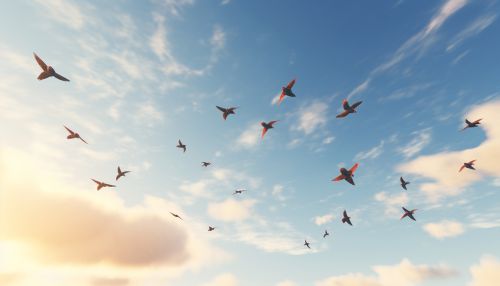The Science of Animal Migration and Conservation Strategies
Introduction
Animal migration is a natural phenomenon that involves the large-scale movement of animal species from one habitat to another. This process is often driven by seasonal changes, availability of food, mating patterns, and survival instincts. Migration is a significant aspect of animal ecology as it influences population dynamics, community structure, and biodiversity. Understanding the science of animal migration is crucial for developing effective conservation strategies to protect and sustain various species. This article delves into the science of animal migration and explores various conservation strategies that are being implemented worldwide.


The Science of Animal Migration
Definition and Types
Animal migration refers to the regular, usually seasonal, movement of all or part of an animal population to and from a given area. The two primary types of migration are predator migration and prey migration. Predator migration is driven by the need to find new food sources, while prey migration is often a response to predator movement or changes in the environment.
Mechanisms of Migration
Animals use various mechanisms to navigate during migration. Some species rely on sun compasses, while others use star navigation, geomagnetic fields, or olfactory cues. For instance, birds and monarch butterflies use a combination of sun compasses and geomagnetic fields to navigate during their long-distance migrations.
Factors Influencing Migration
Several factors influence animal migration, including environmental changes, availability of food and water, breeding needs, and population pressure. For example, Arctic terns migrate from the Arctic to the Antarctic each year in response to the seasonal availability of daylight and food resources.
Conservation Strategies
Habitat Protection
Habitat protection is a critical conservation strategy that involves preserving the natural habitats of migratory species. This can be achieved through the establishment of protected areas, implementation of land use policies, and promotion of sustainable practices.
Species Management
Species management involves direct interventions to protect and conserve migratory species. This can include measures such as population monitoring, captive breeding, and reintroduction programs.
Policy and Legislation
Policy and legislation play a crucial role in conservation efforts. Laws and regulations can provide legal protection for migratory species and their habitats, and promote sustainable practices. International cooperation is also essential, as many migratory species cross national borders during their journeys.
Challenges and Future Directions
Despite the various conservation strategies in place, migratory species face numerous challenges. These include habitat loss due to human activities, climate change, and barriers to migration such as dams and roads. Future conservation efforts need to address these challenges through innovative approaches, increased funding, and stronger international cooperation.
